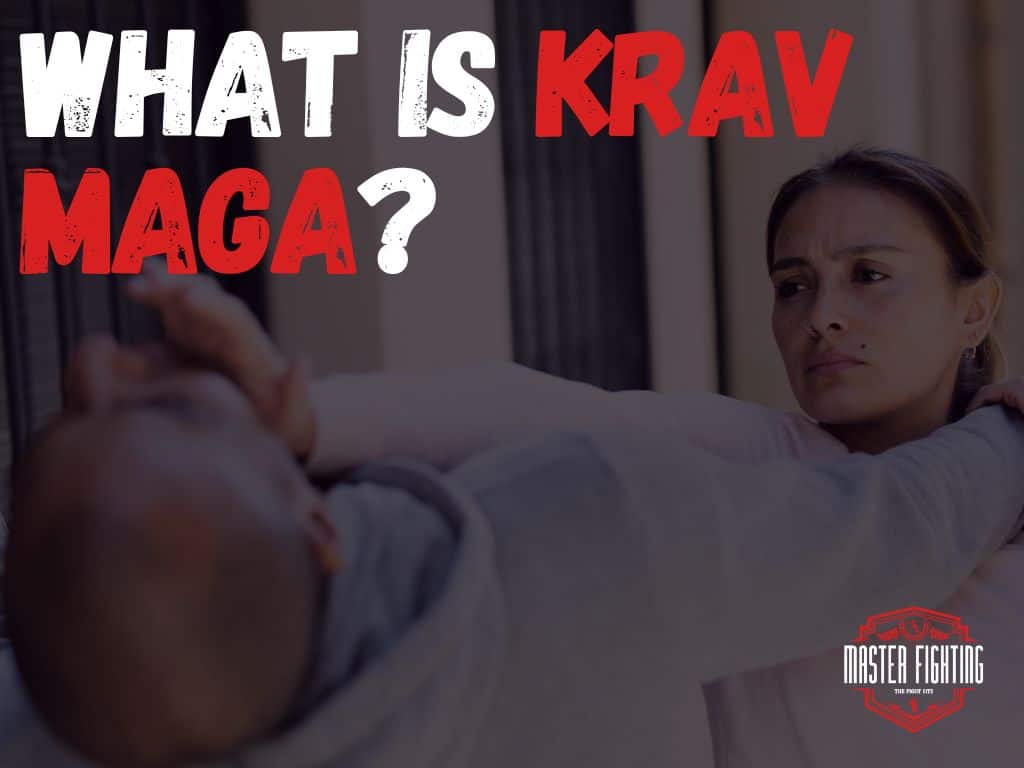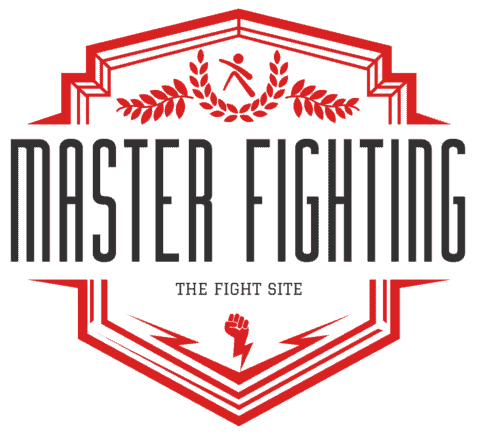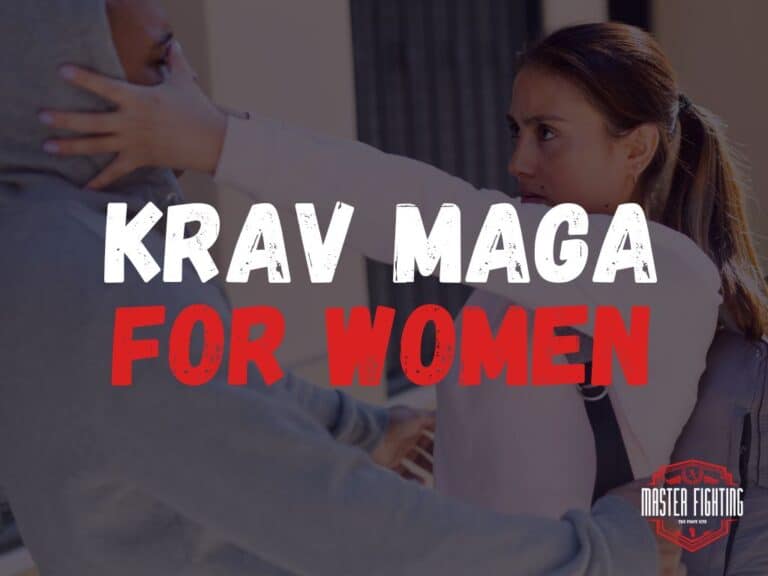What is Krav Maga? The Ultimate Self Defence?
Krav Maga is more than just a martial art – it’s a practical self-defence system that was originally developed for the Israeli military. It’s designed to be relatively easy to learn, effective in real-world situations, and accessible to people of all ages and fitness levels. So, whether you’re a seasoned martial artist or a complete beginner, Krav Maga is definitely worth adding to your arsenal of self-defence techniques. Let’s dive in and learn more about this powerful and dynamic martial art!

History of Krav Maga
Krav Maga was developed in the 1940s by Imi Lichtenfeld, a Jewish athlete and martial artist from Bratislava, Czechoslovakia. Lichtenfeld had a background in boxing, wrestling, and gymnastics, and he used this experience to create a system of self-defence that would be effective in real-world combat situations.
Lichtenfeld began teaching his system to members of the Haganah, a Jewish paramilitary organization that later became the Israel Defense Forces (IDF). Over time, Krav Maga became the official self-defence system of the IDF, and it has since been adopted by military and law enforcement agencies around the world.
Definition of Krav Maga
Krav Maga is a self-defence system that emphasizes practical techniques and real-world scenarios. Unlike traditional martial arts, which may focus on forms or patterns, Krav Maga teaches students to respond quickly and effectively to a variety of threats, including armed and unarmed attacks, multiple attackers, and attacks from various angles.
Krav Maga techniques include strikes, kicks, grappling, and defensive manoeuvres, and students are taught to use their surroundings to their advantage, using objects like chairs, tables, and walls to defend themselves if necessary.
Purpose of Krav Maga
The purpose of Krav Maga is to teach individuals how to protect themselves and others in dangerous situations. Whether you’re walking home late at night or working in a high-risk profession like law enforcement or security, Krav Maga can give you the skills and confidence you need to defend yourself against attackers.
Krav Maga also emphasizes fitness and conditioning, helping students to develop the strength, endurance, and flexibility they need to perform Krav Maga techniques effectively. In addition to physical training, Krav Maga also emphasizes mental preparation, teaching students to be aware of their surroundings and to remain calm and focused under stress.
The Philosophy Behind Krav Maga
The philosophy behind Krav Maga is deeply rooted in the idea that self-defence is a basic human right. This means that individuals should have the necessary tools and knowledge to protect themselves in dangerous situations. Krav Maga also instils the importance of pre-emptive action, which means taking proactive measures to avoid or neutralize a threat before it becomes an imminent danger. In Krav Maga, practitioners are trained to recognize and respond to potential threats in a quick and effective manner.
Another key principle of Krav Maga is the idea of never giving up. This means that practitioners are taught to maintain their focus, determination, and physical strength even in the face of adversity.
Krav Maga training is designed to push individuals to their limits, both physically and mentally, in order to build resilience and confidence. This mindset is not only valuable for self-defence situations but can also be applied to all areas of life. By never giving up, individuals can overcome challenges and achieve their goals, no matter how difficult they may seem.
Basic Principles of Krav Maga
The basic principles of Krav Maga are centred around the idea of self-defence, which is the main goal of the system. This means that the techniques and tactics taught in Krav Maga are specifically tailored to help individuals protect themselves in a variety of dangerous situations.
One of the primary focuses of Krav Maga is on defending against unarmed attacks. This includes strikes, grabs, and chokes, which are common in street fights and other confrontations. Krav Maga teaches practitioners to respond quickly and decisively to these types of attacks, using techniques such as strikes, kicks, and throws to disable the attacker and create an opportunity to escape.
Krav Maga also places a strong emphasis on defending against armed attacks, such as knife attacks, gun threats, and other types of assaults with weapons. In these situations, Krav Maga techniques may include disarming the attacker, using improvised weapons, and using defensive tactics to create distance and escape.
Overall, the basic principles of Krav Maga are designed to give individuals the tools they need to protect themselves in a wide range of scenarios, from unarmed altercations to potentially life-threatening situations involving weapons. By focusing on practical, real-world self-defence techniques, Krav Maga empowers individuals to take control of their own safety and well-being.
Basic Krav Maga Techniques
Krav Maga is a highly effective self-defence system that emphasizes practical techniques and real-world situations. One of the most important aspects of Krav Maga is the use of proper stances and movement to ensure maximum power and efficiency in techniques.
The system utilizes various striking techniques, including punches, elbows, knees, and palm strikes, to disable an attacker and create an opportunity for escape. Kicking techniques are also an essential part of Krav Maga and are used to keep distance, create openings, and control an attacker.
Blocking techniques are equally important and are used to deflect or redirect an attacker’s strikes while simultaneously striking back. Defences against common attacks, such as chokes, grabs, and headlocks, are also extensively covered in Krav Maga training.
Advanced Krav Maga Techniques
Krav Maga is a dynamic and evolving self-defence system that incorporates advanced techniques to prepare practitioners for any possible attack scenario. Advanced techniques of Krav Maga include joint locks and restraints, chokes and strangles, and ground defence techniques. Joint locks and restraints are techniques used to control and immobilize an attacker’s joints by using leverage and pressure.
These techniques are often used when an attacker is attempting to grab or hold onto the defender. Chokes and strangles are techniques used to cut off an attacker’s air supply or blood flow to the brain. These techniques can quickly render an attacker unconscious and allow the defender to escape or gain control of the situation.
Ground defence techniques are used when the defender is taken to the ground by an attacker. These techniques include escapes, sweeps, and submissions that allow the defender to regain their feet or neutralize the attacker. Weapon defences in Krav Maga include techniques to disarm and neutralize attackers who are armed with knives, guns, or other weapons.
These techniques require quick thinking, precise movements, and a deep understanding of weapon mechanics. Dealing with multiple attackers is also a critical aspect of Krav Maga training. Additional skills learned in Krav Maga include situational awareness, positioning, and the use of improvised weapons to increase the defender’s chances of survival in a multiple-attacker scenario.
Training for Krav Maga
To practice Krav Maga a certain level of physical fitness is required. Basic physical fitness requirements include endurance, strength, and flexibility. Students are encouraged to work on improving their stamina through activities such as running, swimming, or other cardio exercises, as well as strength training exercises like push-ups, sit-ups, and weightlifting. Flexibility is also important in Krav Maga, as it allows practitioners to move more freely and avoid injury. Mental preparation is also a crucial part of Krav Maga training, as it teaches students to stay calm and focused in high-stress situations.
Training programs and classes are designed to help students develop their Krav Maga skills in a safe and structured environment. Classes typically begin with warm-up exercises and drills, followed by techniques and self-defence scenarios. As students progress, they may advance through the belt system, which typically includes white, yellow, orange, green, blue, brown, and black belts. Each level of the belt system corresponds to an increasing level of proficiency in Krav Maga techniques and principles.
Krav Maga training is intense and requires dedication and commitment. However, with regular practice and hard work, anyone can become proficient in this self-defence system. Krav Maga is an excellent choice if you are looking to improve your physical fitness, learn practical self-defence skills, or simply try something new.
Krav Maga Gear and Equipment
Krav Maga requires minimal gear and equipment. However, certain items can make training more comfortable and effective. Clothing for Krav Maga training should be comfortable, allowing for a full range of movement. Loose-fitting clothing is recommended, and avoid jewellery or anything that could get caught or cause injury. Athletic shoes with good support and traction are also essential.
Protective gear can be used during sparring and other contact training to reduce the risk of injury. Common protective gear used in Krav Maga includes gloves, shin guards, headgear, and groin protectors. These items can help absorb impact and prevent injuries.
In addition to protective gear, weapons training is also an important aspect of Krav Maga. This includes training with traditional weapons, such as knives and guns, and everyday objects that can be used for self-defence, such as keys or a pen. Training with these weapons can help prepare individuals for real-life self-defence situations.
Krav Maga for Law Enforcement and Military
Krav Maga has become popular with law enforcement and military personnel around the world. The practical and effective nature of Krav Maga techniques makes it an excellent fit for those who work in high-risk professions.
Krav Maga is particularly useful for law enforcement as it emphasizes the importance of pre-emptive action, striking techniques, and defences against common attacks. The use of Krav Maga in the military focuses on preparing soldiers for close-combat situations, ground defence techniques, and weapon defences. Krav Maga has also played a role in counter-terrorism operations, as it provides soldiers with the skills necessary to neutralize threats in a fast and efficient manner.
Krav Maga Around the World
Krav Maga has gained popularity all over the world not only for its practical and effective techniques but also for its ability to be learned relatively quickly and applied in real-life situations. There are quite a few Krav Maga organizations around the world that provide training and certification for instructors and practitioners such as the International Krav Maga Federation (IKMF), Krav Maga Worldwide (KMW), and Krav Maga Global (KMG).
Krav Maga has gained popularity in lots of countries around the world, particularly in the United States, Israel, and Europe. In Israel, where Krav Maga originated, it is widely practised and has been incorporated into military and law enforcement training.
In the United States, Krav Maga has grown in popularity over the past decade and is now taught in lots of gyms and martial arts schools across the country. Krav Maga is also popular in European countries such as Germany, France, and the United Kingdom, where there are several Krav Maga organizations and many training centres.
Famous Krav Maga Practitioners
Imi Lichtenfeld is considered to be the father and founder of Krav Maga. Lichtenfeld was born in 1910 in Budapest, Hungary, and grew up in Bratislava, Slovakia, where his father was a police chief. From a young age, he was trained in boxing, wrestling, and fencing. In the 1930s, Lichtenfeld became involved in street fighting in Bratislava, where he developed his own self-defence techniques. When he moved to Palestine in the late 1930s, Lichtenfeld began to teach these techniques to the Jewish community as a means of defending themselves against anti-Semitic attacks. After the establishment of the state of Israel in 1948, Lichtenfeld continued to develop and teach Krav Maga to the Israeli military and law enforcement.
Today, there are many famous Krav Maga instructors who have gained recognition for their skills and contributions. Among them is Darren Levine, who is considered to be one of the top Krav Maga instructors in the world. Levine is a certified sixth-degree black belt and has trained law enforcement and military personnel around the globe. Another notable Krav Maga instructor is Eyal Yanilov, who co-founded the International Krav Maga Federation and has trained numerous law enforcement agencies and military units.
In addition to famous instructors, there are also many celebrities who practice Krav Maga. Some of the most well-known celebrities who have trained in Krav Maga include Angelina Jolie, Jennifer Lopez, Tom Cruise, and Daniel Craig. These celebrities have cited Krav Maga as a way to stay fit and prepare for their roles in movies.
Summary
In this post, we have explored the history, philosophy, techniques, and training aspects of Krav Maga. We have learned that Krav Maga is a self-defence system developed in Israel that focuses on practical and effective techniques for real-life situations. The philosophy behind Krav Maga emphasizes self-defence as a basic human right, pre-emptive action, and never giving up.
The basic principles of Krav Maga include self-defence, defence against unarmed attacks, and defence against armed attacks. The basic techniques of Krav Maga include stances and movement, striking techniques, kicking techniques, and blocking techniques. Advanced techniques of Krav Maga include ground fighting, weapon defences, and dealing with multiple attackers.
We have also discussed the importance of physical fitness, mental preparation, and the belt system in Krav Maga training. Additionally, we have explored the role of Krav Maga in law enforcement, military, and counter-terrorism operations, and its popularity around the world. Finally, we have highlighted the famous Krav Maga practitioners who have contributed to the development and promotion of this self-defence system.
Krav Maga is an effective and practical self-defence system that can benefit anyone who wants to learn how to protect themselves and their loved ones. It is not only physical training but also a mental and emotional one that teaches discipline, focus, and resilience. Krav Maga emphasizes situational awareness, quick decision-making, and effective use of force. It can improve your confidence, fitness, and overall well-being.
If you are interested in learning Krav Maga, find a reputable Krav Maga school or instructor near you and look for instructors who have a recognized certification, relevant experience, and a good reputation. Make sure to check the quality of the training facility, the curriculum, and the class schedule. Talk to other students and ask for their feedback. Remember, learning Krav Maga is a commitment to yourself and your safety. So, take it seriously, practice regularly, and enjoy the journey.

Author Bio
Hi, I am William. I started out in martial arts with Goshin Ju Jitsu when I was 7 years old. I am passionate about martial arts and love sharing everything I learn. I created Master Fighting to become a resource for learning about martial arts and alternative fighting styles. Learn more about me.






